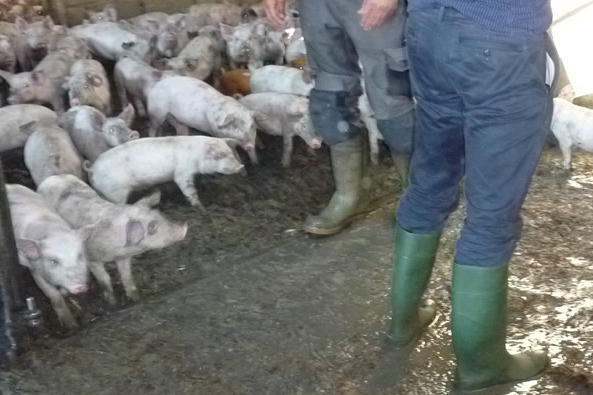US: Uni unveils system that turns manure into biogas

The University of Missouri has unveiled a prototype small-scale anaerobic digestion system that turns pig manure into biogas. The device also reduces odour from swine operations. How could this system benefit a pig farm where cost and management play a key role?
Funded by the MU College of Agriculture, Food and Natural Resources, the anaerobic digester consists of three tanks. Manure from the hog barn pit is pumped into one tank where the manure is stored and mixed. The anaerobic digestion takes place in the other two tanks, where bacteria break down the manure in these warm and oxygen-free tanks.
The biogas from the manure can be used for electricity and hot water production. With some further treatment it can also be stored as a compressed natural gas, for heating or even vehicle fuel.
There are other benefits to anaerobic digestion in addition to energy generation. The digested manure retains the nutrients to be good fertiliser while becoming a more consistent product. Also, the digester can reduce odour emissions.
“When the manure is treated by the digester process the odour concentration is significantly reduced,” said Teng Lim, Extension Ag Systems Management associate professor.
Odour problems can lead to lawsuits
Before the 1960s, most pork in the US was raised in outside lots or on pasture systems. With the development of slotted floors and liquid manure handling equipment, it became possible for producers to more easily care for larger numbers of animals. Enclosed buildings overcame most weather problems and predators, and minimised the potential pollution from outside lot runoff.
Typically, pig odour is a localised air quality problem, with low concentrations of odorous gases such as p-cresol. Odour problems are often a starting point for litigation. Many farmers can go out of business just fighting a lawsuit.
Cost and management biggest challenges faced by pig farms
There are challenges to anaerobic digestion, the biggest being cost and management. In a commercial setting the digester would be 100 times larger than the one at MU’s swine research facility.
Lim pointed out that industry leaders and scientists believe anaerobic digesters will be an important piece of future farms, both to mitigate odour and for generating renewable energy. The cost is a major obstacle now. The team is working closely with industry experts from Martin Machinery, a Missouri company who specialises in biogas generators and control systems.
The researchers are using the scaled down digester to find ways to make digesters more affordable and easier to manage. They are also using it as an education tool to show producers the potentials, what it takes to process the manure, and to train people how to properly run a system like this.











